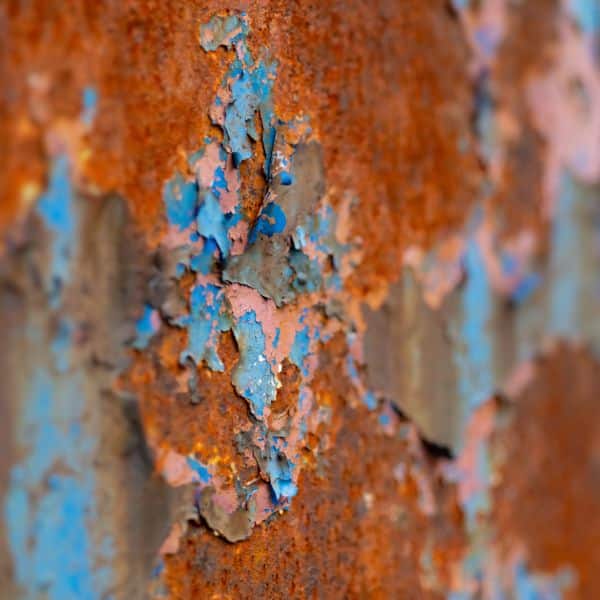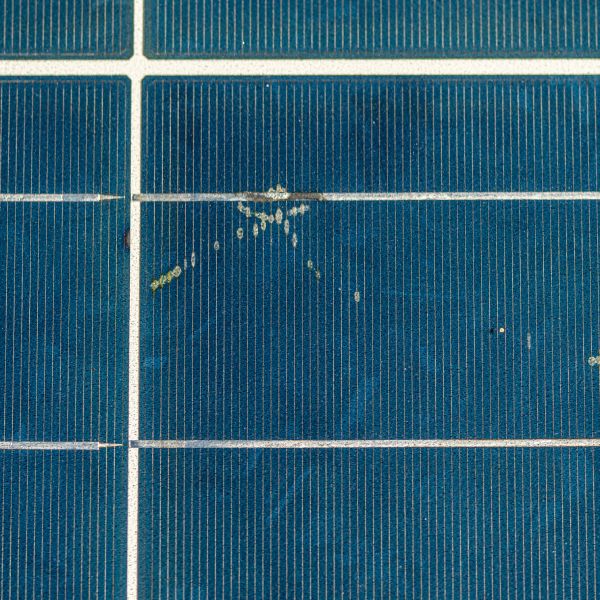How To Identify Solar Panel Ground Mount Corrosion
Solar Panel Ground Mount Corrosion can be hugely damaging to your solar investment, so it’s essential to know how to recognise the signs of corrosion to protect and overcome any issues before they affect your setup and home too severely. There are many issues caused by corrosion to your solar farm, including but not limited to:

How corrosion appears on steel frameworks
Steel contains iron, which, when exposed to air, accelerates the oxidation process leading to corrosion. This change is easily noticed on steel frameworks as the original grey or silver colour turns into a distinct brown or red hue—commonly recognised as rust. The characteristic orange-brown colour of rust is a clear indicator of corrosion.
What is the difference between Corrosion and rust?
Corrosion
Corrosion encompasses a broad range of processes where materials, including metals and non-metals, break down due to oxidation. This generally happens when materials are exposed to oxygen in the air or water, leading to oxidation. In general corrosion, this results in damage across the entire surface of the metal as atoms lose electrons to oxygen, forming oxides.
Rusting
Rusting is a specific type of corrosion that only affects iron and its alloys. It occurs when iron comes into contact with both oxygen in the air and moisture, leading to the familiar red oxide we know as rust. Unlike general corrosion, which can manifest in various colours like blue or green depending on the material, rusting specifically refers to the deterioration of iron.
How to Prevent Corrosion
There are several effective methods to prevent corrosion, suitable for different situations:
1. Use Non-Corrosive Metals:
Opting for materials like stainless steel or aluminium can inherently resist corrosion.
2. Keep Metal Surfaces Dry and Clean:
Ensuring that metal surfaces are free from excess moisture and debris can significantly reduce the risk of corrosion.
3. Apply Protective Coatings: Using barrier products such as grease, oil, paint, or even modern solutions like carbon fibre coatings can shield metals from environmental exposure.
4. Implement Drying Agents:
Chemicals that absorb moisture from surfaces can be a practical option to keep metal dry.
5. Use Backfill Materials:
For underground pipes, laying a layer of limestone can help protect against corrosion.
6. Employ Sacrificial Anodes:
This method of cathodic protection involves placing a more easily corroded metal in contact with the protected metal, diverting the corrosion to the sacrificial anode.
The Most Common Issues Caused By Corrosion
Corrosion is a pervasive issue that can affect any metal structure, including solar panel ground mounts. Here are some of the most significant problems it can cause:

Structural Instability
Corrosion severely undermines the structural integrity of metal frameworks. This is particularly critical in areas close to water sources, such as oceans, where saltwater accelerates the corrosion process. The weakened structure, especially under the load of solar arrays, risks collapsing. It is crucial to monitor and report any signs of corrosion on solar ground mount frames promptly.
Affected Physical Appearance
In addition to structural risks, corrosion degrades the visual appearance of metal structures. This may not pose immediate physical dangers, but a corroded and neglected appearance can significantly devalue the aesthetic and perceived upkeep of the structure.
Environmental Damage
Corrosion poses serious environmental threats as well. For instance, corroded pipes in chemical plants or residential areas can leak harmful substances, contaminating local water sources and endangering both human health and wildlife. Additionally, deteriorating metal pieces can become hazards to local ecosystems, impacting wildlife and the environment.
How Does Corrosion Affect Solar Farm Ground Mounts?
Corrosion poses a significant risk to solar panel ground mounts, potentially leading to severe issues for your solar setup. Understanding the impact of corrosion on these structures is crucial to prevent and mitigate any problems.
The soil itself harbours corrosive properties that can be harmful to steel structures buried within it. The UK is home to over 700 different soil types, each with distinct characteristics. Steel tends to corrode rapidly in acidic conditions and remains more stable in alkaline environments. Depending on the soil, the rate of steel corrosion can vary dramatically, from less than 0.2 microns per year in favourable conditions to over 20 microns per year in highly aggressive soils.
Understanding Galvanic Corrosion: A Key Challenge for Metal Structures
What is Galvanic Corrosion?
Galvanic corrosion is a specific type of bimetallic corrosion. It occurs in an electrochemical process where one metal corrodes preferentially when it is in contact with a different type of metal through an electrolyte. This form of corrosion is particularly relevant in environments where metals are exposed to electrolytes, such as saltwater.
Preventing Galvanic Corrosion
Preventing galvanic corrosion is crucial to prolonging the life of metal structures. Here are effective strategies to mitigate this issue:
1. Use Insulating Materials:
Placing an insulating material between dissimilar metals can prevent them from making direct electrical contact, effectively breaking the electrical circuit and stopping the current flow.
2. Block Electrolyte Contact:
Ensure that the electrolyte does not bridge the two metals. This can be achieved by designing barriers or coatings that isolate the metals from potential electrolytes.
How Often Do Solar Farm Ground Mounts Need To Be Replaced?
Solar panels and photovoltaic (PV) systems generally require minimal maintenance, which is a significant advantage. However, it is vital to regularly clean both PV panels and their ground mounts. This helps remove any harmful chemicals that might linger and cause damage over time. Given the risks associated with corrosion, it is crucial to inspect your solar farm setup regularly. Typically, ground mounts should be considered for replacement every 25 years to ensure safety and efficiency.
What If I Have A Corroded Solar Panel Ground Mount?
Dealing with corrosion in solar panel ground mounts promptly is essential to avoid incurring high costs. Even galvanised steel, which is more resistant to corrosion, is not entirely immune and can deteriorate over time. If you find corrosion on your solar panel ground mount, Venture Steel is here to assist. We offer tailored solutions to address and resolve corrosion issues, helping you maintain the longevity and performance of your solar infrastructure. Contact us to find out how we can help you.